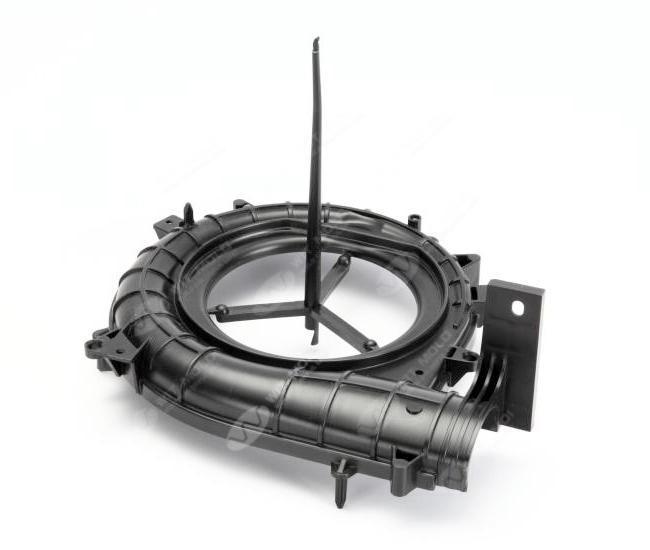Login

Login

Jan. 14, 2025
1. Introduction to PBT
Polybutylene terephthalate (PBT for short) belongs to the polyester series. It is a milky white translucent to opaque, crystalline thermoplastic polyester resin made by the polycondensation of 1.4-pbt butanediol (1.4-Butylene glycol) and terephthalic acid (PTA) or dimethyl terephthalate (DMT) through a mixing process. Together with PET, they are collectively referred to as thermoplastic polyesters, or saturated polyesters.
2. Characteristics of PBT materials used in car lamp products PBT materials are used in car lamp products, mainly for decorative frames, reflectors and other products that require aluminum plating, and have relatively high requirements for product appearance. Now let's introduce PBT materials.
1. Process characteristics of PBT PBT has a clear melting point of 225-245℃. It is a crystalline material with a crystallinity of up to 40%. The viscosity of PBT melt is not as affected by temperature as shear stress. Therefore, in injection molding, the injection pressure has a significant effect on the fluidity of PBT melt. At the same time, the temperature change of the melt caused by the shearing action of the screw during plasticization should be observed.
PBT has good fluidity and low viscosity in the molten state, second only to nylon, and is prone to "casting" during molding.
PBT molded products are anisotropic. PBT is easily degraded when exposed to water at high temperatures.
2. When selecting a screw injection molding machine, the following points should be considered.
① The amount of material used for the product should be controlled within 30% to 80% of the rated maximum injection volume of the injection molding machine. It is not advisable to use a large injection molding machine to produce small products.
② A gradient three-stage screw with a length-to-diameter ratio of 15 to 20 and a compression ratio of 2.5 to 3.0 should be selected.
③ The nozzle (a self-locking nozzle can also be selected) is equipped with a heating and temperature control device.
④ When molding flame-retardant PBT, the injection molding parts of the injection molding machine should be treated with anti-corrosion.

3. Product and mold design
① The thickness of the product should not be too thick. PBT is very sensitive to notches. Therefore, the transition points of the right angles of the product should be connected by arcs.
② The molding shrinkage of unmodified PBT is relatively large, ranging from 1.7% to 2.3%. The mold should have a certain demolding slope.
③ The mold needs to have vent holes or vent grooves with a depth of 0.013-0.038mm.
④ The diameter of the gate should be large.
⑤ The mold needs to be equipped with a temperature control device. The maximum temperature of the mold cannot exceed 100℃.
⑥ For flame-retardant PBT molding, the mold surface should be chrome-plated for corrosion protection.
4. Raw material preparation. Drying should be carried out before injection molding, and the moisture content should be controlled below 0.02%. When using a dehumidifying dryer or hot air circulation drying, when the temperature is 120℃, the corresponding time shall not exceed 4h.
5. Injection molding process parameters ① Injection temperature
The decomposition temperature of PBT is 280℃, so it is generally controlled between 235 and 245℃ in actual production.
② Injection pressure The injection pressure is generally 50-100MPa.
③ Injection rate
PBT cools quickly, so a faster injection rate should be used.
④ Screw speed and back pressure
The screw speed of PBT molding should not exceed 80r/min, generally between 25 and 60r/min. For products with complex structures, the screw speed can be controlled at 30r/min. The back pressure is generally 10% to 15% of the injection pressure.
⑤ The mold temperature is generally controlled at 70-80℃, and the temperature difference of each part does not exceed 10℃.
⑥ The molding cycle is generally 15-60s.
Notes
① Use of recycled materials
The ratio of recycled materials to new materials is generally 15% to 75%.
② Use of release agent
No release agent is generally used. Silicone release agent can be used when necessary.
③ Shutdown treatment
The shutdown time of PBT is within 30 minutes. The temperature can be lowered to 200℃ and the machine can be shut down. When resuming production after a long shutdown, the material in the barrel must be emptied and new material must be added before normal production can be carried out.
④ Post-processing of products
No processing is generally required. If necessary, it can be processed at 120℃ for 1 to 2 hours.
206 0 0
Join Us

Comments
All Comments ( 0 )